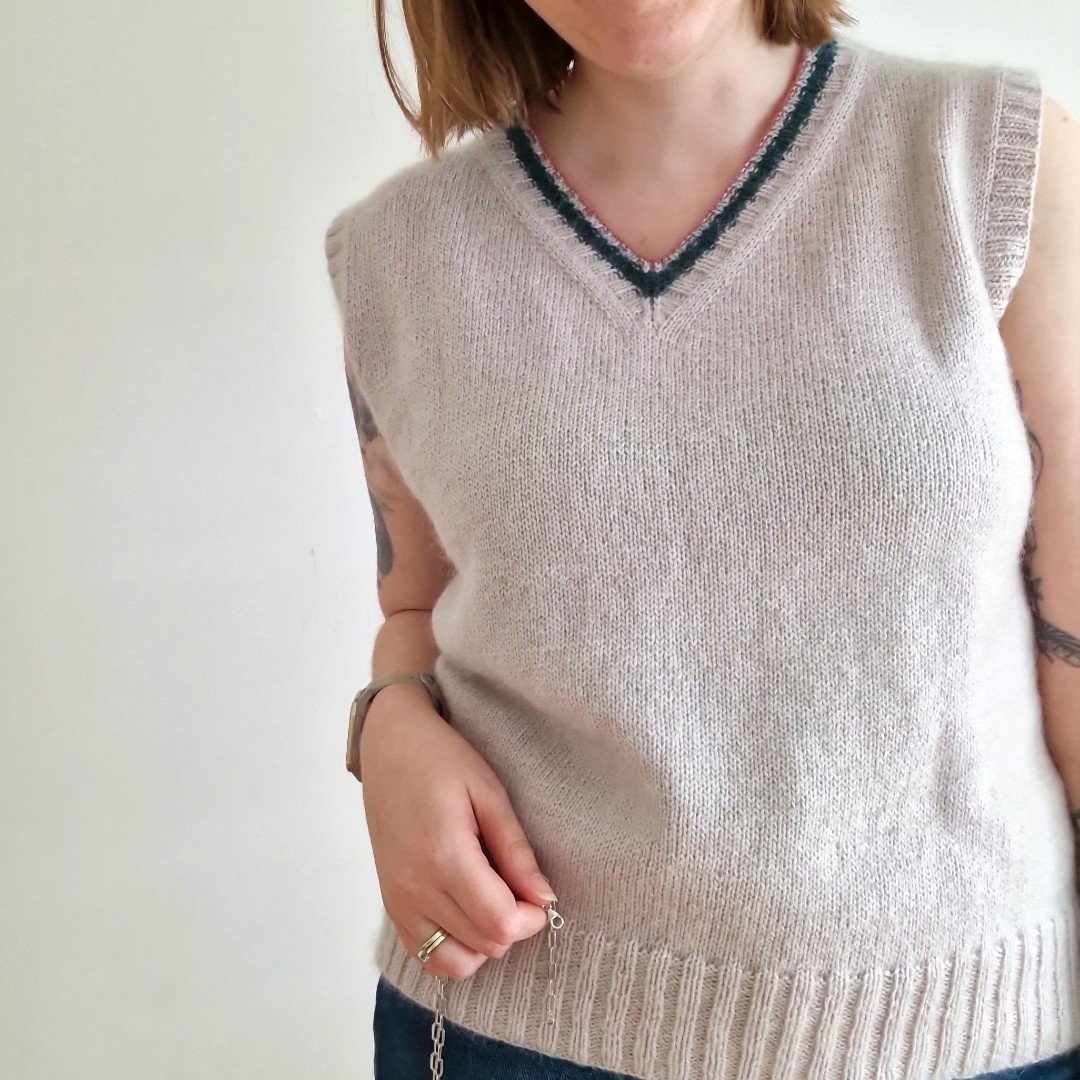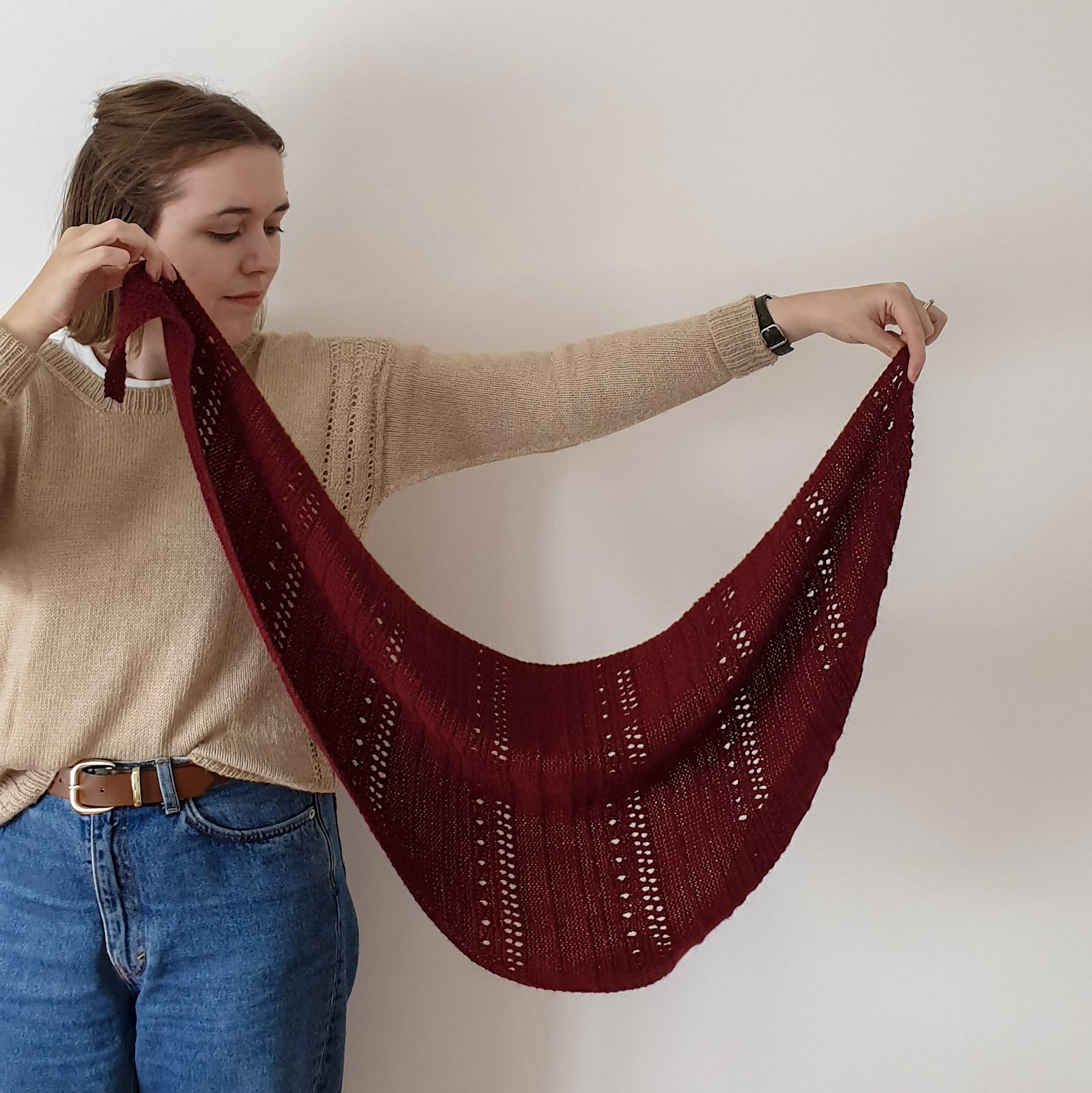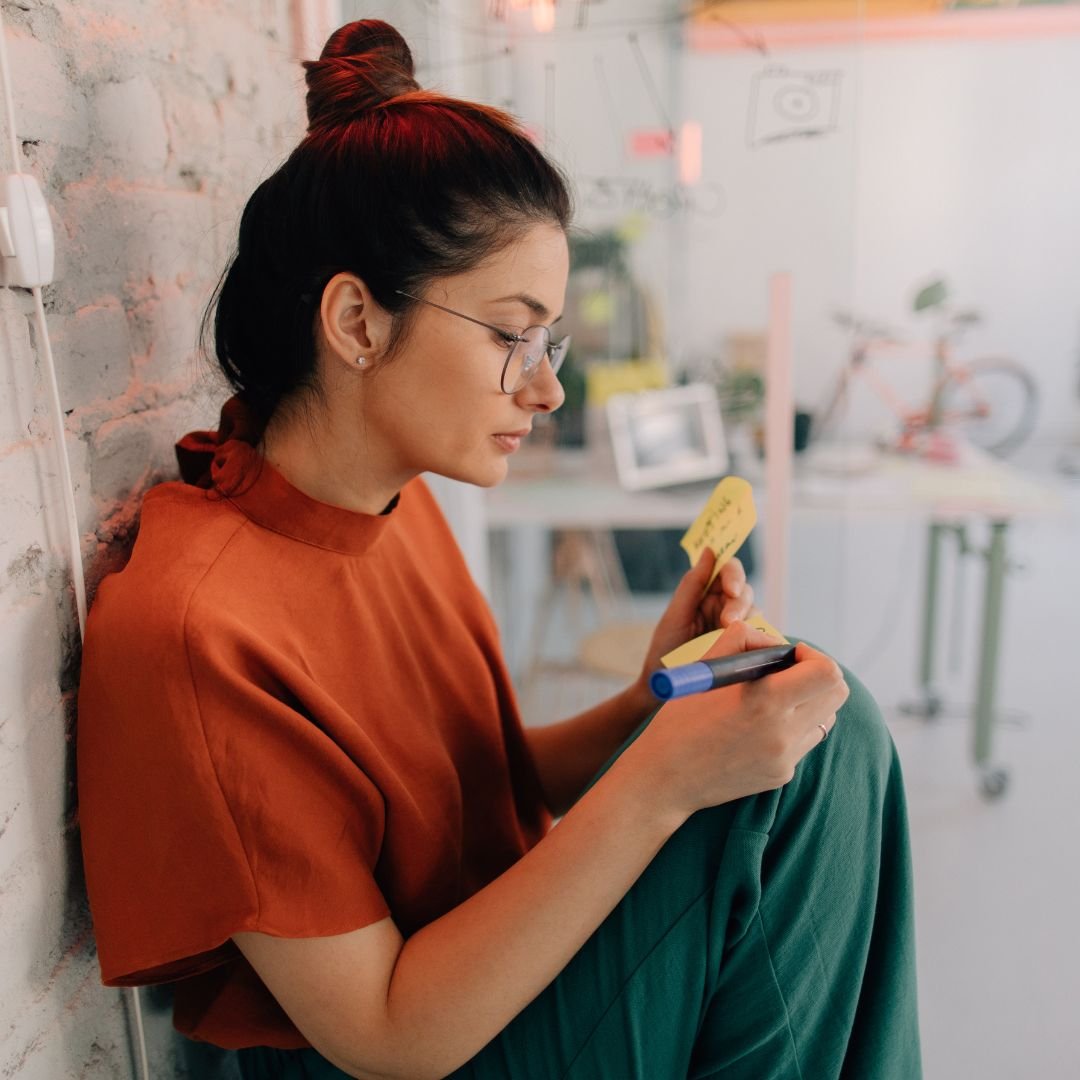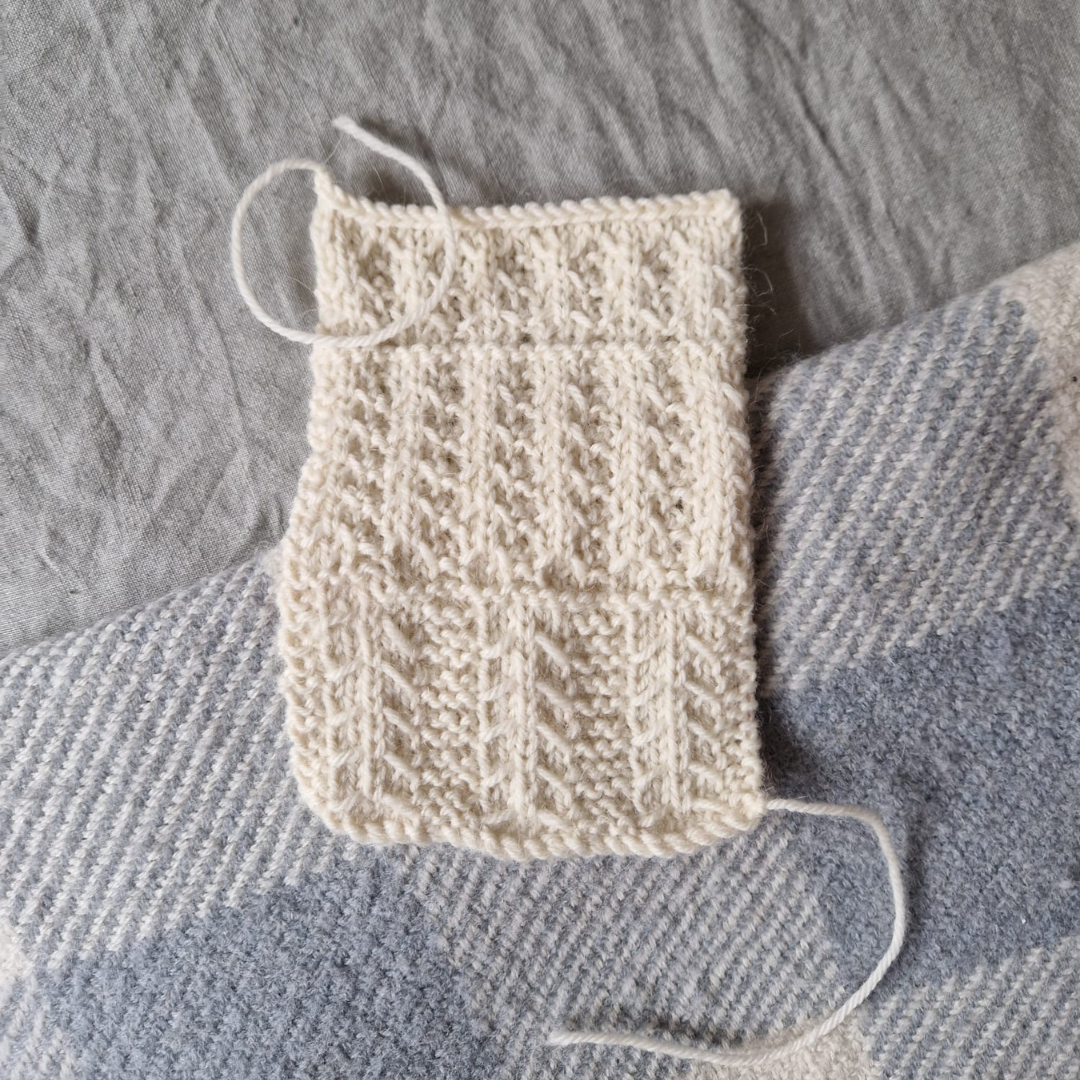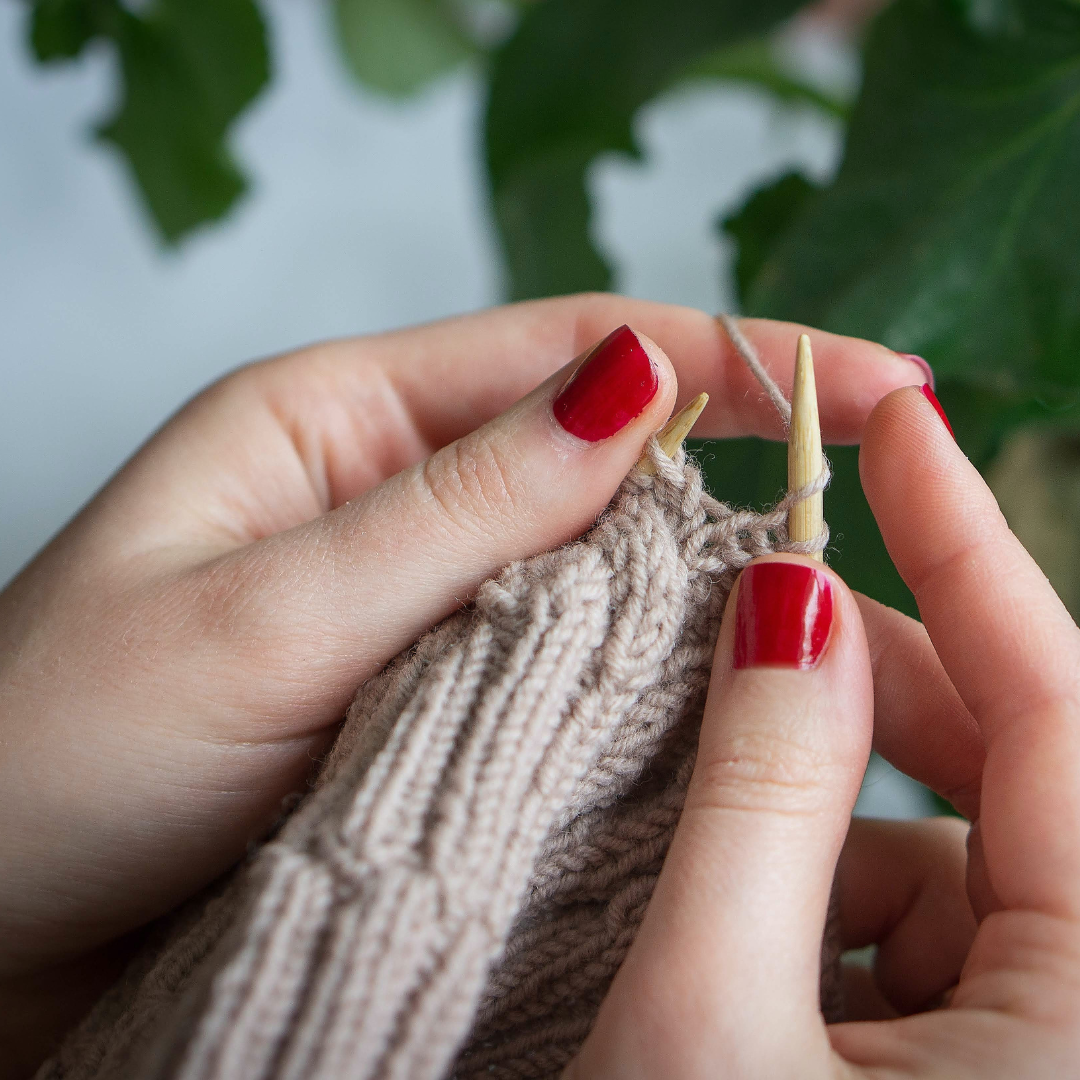How to Design Stitch Patterns Without a Stitch Dictionary
New knitting pattern designers often turn to stitch dictionaries for inspiration, a reliable source for tried-and-true stitch patterns. But there's an additional, exciting layer to our design work: creating unique designs from these foundations inspired by the world around us.
Just recently, I’ve designed stitch patterns inspired by an antique tea towel and the stitching on a pair of trainers. These everyday items can be more than just objects; they can be a springboard for your creativity.
In this post, I'll guide you through the process of using your knitting knowledge and a range of inspirations to develop original stitches and motifs. We'll explore how to build on the basics, find inspiration in ordinary places, and translate these into your knitting.
Let’s get started!
Image description: A dark red knitted swatch on a wooden table with a text overlay saying, How to Design Stitch Patterns Without a Stitch Dictionary
What are you working with?
When designing your own stitch patterns, think about each stitch as a “mark” you can make on your fabric. You’ll be surprised by how powerful simple knits and purls can be when creating beautiful stitch patterns.
My Lovelock design just uses knits and purls for the whole scarf, which has a beautiful texture. I use areas of knit, purl and moss stitch to create subtle, geometric patterns without any need for colourwork.
One Step Further
Of course, you can create even more intricate patterns by introducing other techniques. Twisted stitches, for instance, introduce a delightful, raised texture and crispness to your work that can't be replicated.
You may also wish to explore the possibilities of slipped stitches, which not only add interesting texture to your knitting but can be used in Mosaic Colourwork to create striking motifs with only one yarn per row.
And don't forget the magic of yarnovers – they are fabulous when designing open lacework patterns but can also be a simple accent in an otherwise textural stitch. They also make lovely, decorative increases.
Consider the Direction
To truly master the art of stitch design, understand how increases and decreases can shape your knitted fabric in various directions. It’s like drawing with your stitches! Whether you’re creating graphic diagonal lines, dynamic chevrons, or intricate shapes, strategically placing these increases and decreases will be your secret weapon. They don’t have to change your stitch count either - just remember to pair your increases with decreases elsewhere in the stitch and vice versa.
Finding Inspiration
Image description: Textiles inspired by the natural world
One of the most rewarding aspects of knitting pattern design is being able to find inspiration anywhere in the world around us. Nature, architecture, and everyday objects can all serve as a wellspring of creativity for interesting stitches and motifs.
Nature can be a constant source of inspiration for many designers. The delicate ripples of water on a lake, the veins of a leaf, or the symmetry of a snowflake can all spark ideas for eye-catching stitch patterns.
The world of architecture is another place where inspiration is everywhere. The interplay of light and shadow on a building's façade, the geometric design of a tiled mosaic, or the beautiful arches of a bridge can all serve as the foundation for interesting stitch motifs.
And, of course, don't underestimate the creative potential of everyday objects surrounding us. As I mentioned in the introduction, I've recently found inspiration in unexpected places, like an antique tea towel and the stitching on a pair of trainers.
These seemingly mundane items can be treasures waiting to be discovered. The key is to look beyond their original purpose and focus on the patterns, textures, and details that make them special.
The Essential Role of Swatching in Design
Swatching is a fundamental step when designing stitch patterns. It's where your ideas come to life, allowing you to explore stitch manipulation and understand how they knit up in different yarns or gauges. It’s where you can experiment and refine your stitches before using them in your final design.
Remember how I compared stitches to marks you can make on your fabric? Now it’s time to start mark-making. Look at your inspiration or reference image, and try to visually simplify it to marks or motifs. Then, start making those marks using stitch.
Don’t feel like your initial inspiration has to be evident in your stitch pattern - the inspiration is the starting point, and you can take it in whatever direction you want.
Image description: Close up of a woman with red nails knitting a swatch in an oatmeal coloured yarn. The text says, Knitting Pattern Design. How to Design Stitch Patterns Without a Stitch Dictionary
Have Fun With It
If you’re designing your first knit pattern, you might not feel ready to create your own stitch patterns from scratch, and that’s perfectly okay. As you gain confidence in the design process, experimenting with unique stitch patterns can be a really fun and rewarding next step.
As you start swatching, consider experimenting with various elements that influence your fabric.
Altering your needle size can significantly impact your stitch’s outcome. Playing around with different needle sizes reveals how they affect the drape and overall appearance. A larger needle might create a looser, more open texture, while a smaller one can yield a tighter, more structured fabric.
Your yarn selection will also play a big part in your overall fabric. Swatch with different yarn types—such as alpaca, cotton, wool, or blends—to observe how they interact with your stitch design. Each yarn brings distinct qualities, from structure and warmth to softness and lustre.
I recently designed a pattern that was initially going to be in cotton. My stitch design featured many slipped stitches with floats at the front, which stood out nicely in the cotton. But when the yarn was changed to wool, those floats practically disappeared! I had to adjust the pattern to make it work for the new yarn.
Embrace the process of experimentation, and don't hesitate to spend a reasonable amount of time exploring these elements to achieve the desired look and feel for your stitch pattern.
Documenting the Process
While it’s not essential, keeping a swatch journal or swatch board can be a fun and helpful way to keep track of your stitch or motif ideas. It allows you to preserve your inspiration and refine your stitch designs.
Even if you don't consider yourself an artist, creating rough sketches on-the-go can be a helpful way to visualise the layout of your stitch patterns and their placement within your design, providing a handy reference for future projects.
Documenting swatches, including details like yarn, needle size, and how the stitch pattern is worked, will come in handy when writing your pattern. And for the stitches you choose not to go ahead with, you can still document them. There is a lot to learn by revisiting past ideas, understanding what worked well, and building upon them.
Conclusion: How to Design Stitch Patterns without a Stitch Dictionary
Isn't it amazing how our everyday surroundings can generate such beautiful stitch patterns? Whether it's an interesting pattern on a street tile or the intricate texture of a leaf, inspiration is everywhere, just waiting to be brought to life in your knitting pattern designs.
So, here's a fun challenge for your next design: Look around and find something unexpected to inspire your own unique stitch pattern. It can be absolutely anything!
And now, what's the most surprising thing that's ever inspired one of your knitting patterns? Drop a comment below with your story!




